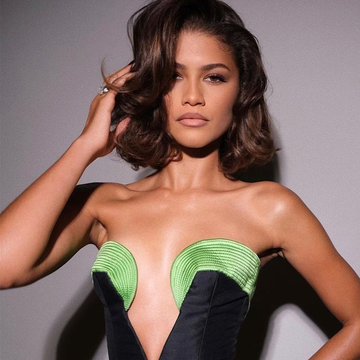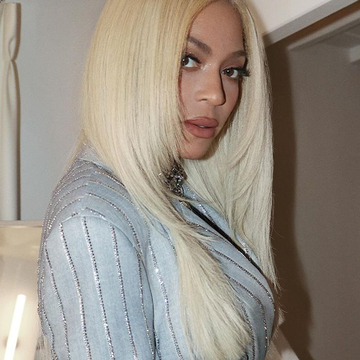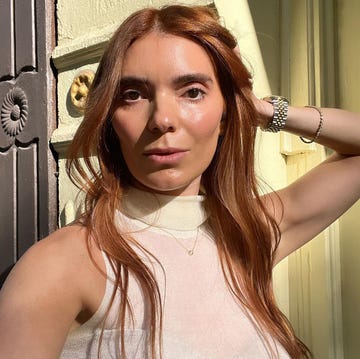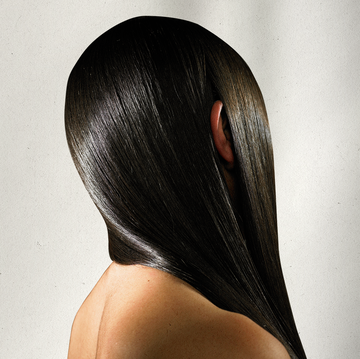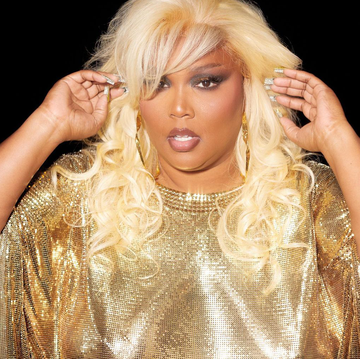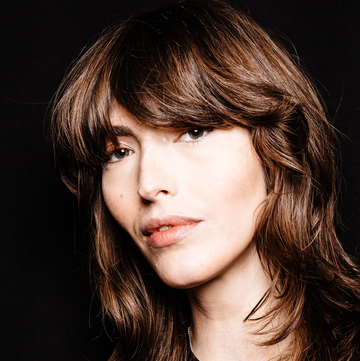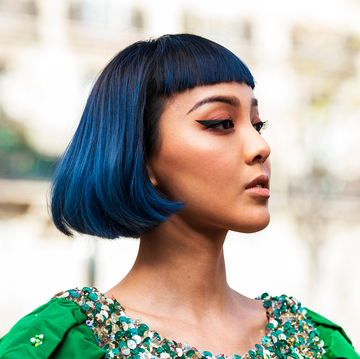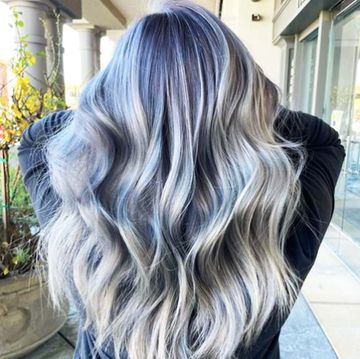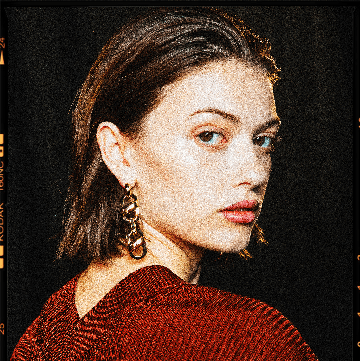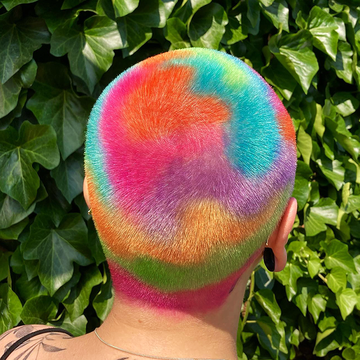Hating your hair is a terrible and universal experience. It's bound to happen at last once in your life that you get a haircut that makes you cry or highlights that make your skin look a tinge green.
This happened recently to Cosmopolitan.com editor Elizabeth Narins, pictured above. She went to a hair color appointment with zero idea of what she wanted, and she walked out of the salon hating her new color. After hooking Elizabeth up with Rachel Bodt, senior colorist at Cutler Salon in NYC, to get her hair fixed, I made it my mission to keep other women from feeling as helpless.
Here are 10 common mistakes that could leave you hating your hair color, and 10 ways to make sure you always end up with the hair color of your dreams.
At Home
1. You're choosing a color that's too dark for you. A good rule of thumb is to never go for a box color that is darker than your eyebrows. Your arches are a good indicator of what your skin tone can handle when it comes to hair color, so use them as a guideline.
If you do accidentally go darker than you wanted, Bodt suggests using a clarifying shampoo that will pull out some of the tone and lighten the hue. (Try Suave Daily Clarifying Shampoo.) You can also use a sulfur-based color remover called Oops that removes the top layer of color, or you can mix five drops of a dish soap with a quarter-size amount of regular shampoo to help strip the color. To keep your hair from grabbing too much color next time, coat your hair with coconut oil from the midshaft down.
2. You're trying to correct mess-ups on your own. Here's the thing: The more layers of box color you use to lighten or darken your hair, the harder it is for a pro to fix later on. To mend your mistake the right way, try using a color-stripping product like Oops once or twice in a row, and if your color still doesn't look like what you want it to, make an appointment with a colorist to price out a color correction.
3. You're trying to bleach your hair at home. The thought of going blonde or even platinum is exhilarating, but if you're looking to lift your color more than two shades, it should always be done in the salon, especially if you hair is darker than a dark blonde. In order to get the color you're looking for, you need a lot of tools like heat and potent bleach.
4. You're highlighting your own hair and it's turning brassy. If you've been working on getting natural-looking highlights at home but your hair still turns an orange-y tinge, Bodt recommends using a violet shampoo to cancel out some of the brassiness. (Try Oribe Bright Blonde Shampoo for Beautiful Color.) After you've washed your hair with a purple shampoo, use it every other time you shampoo to keep your color true. She also says you can use a demi- or semi-permanent toner or gloss two to three weeks after you've highlighted your hair to tone your blonde strands. (Try John Frieda Color Refreshing Gloss for Blondes.)
5. You're using henna to color your hair. Henna is a direct dye that penetrates your strands and sits in the hair shaft, which is what you want your hair color to do, Bodt says. But the downside is that you can't remove henna easily. If you ever want to lighten your strands after a henna dye, you could have a problem. It can also tend to appear too dark if you use it continuously. If you are going to color your hair at home, opt for a semi- or demi-permanent rather than permanent dye that will fade in a few months. That way, if you're not entirely pleased with your color, you're not stuck with it.
At the Salon
6. You haven't decided what hair color you want even though you're on your way to your appointment. The worst thing you can do is sit in your colorist's chair and say, "Do whatever you think would look good, since I don't know what I want." If you don't have a clear vision, you run the risk of ending up with hair color that isn't what you wanted at all.
If you're not sure, Bodt advises on waiting to get your hair colored until you know what you want. "You also need to know what it is that you don't want," she adds. Tear out pages from magazines or screen shot inspiration photos of people's hair and take your research to the salon with you. One colorist's idea of red might not be what yours is. Also, finding a good colorist is kind of like dating. The first person who does your hair might not be your hair match made in heaven, so be prepared to give a few people a shot.
7. You're not telling your colorist your hair color history. It's important to tell your colorist everything you've done to your hair, including glazes, at-home or in salon color, any temporary colorants — anything — because even it if was a year ago, unless you got a pixie cut recently, the remnants are still in your hair.
8. You're not asking to get your hair fixed even though you don't like it. So you got highlights, but they don't look like Gisele's, aka they're not what you wanted. If you went to a reputable colorist, what most likely happened is you didn't communicate what you wanted properly. So, call them up and politely let them know that your look is not what you wanted. Their goal is to make you happy and to keep you as a client, so don't be bashful in saying what you feel (nicely).
If the highlights were done too light, you can go darker or the colorist can apply lowlights to tone down the blonde. If the highlights aren't light enough, they can be amped up with more highlights and by toning down any brassy pieces, so you do have options. Usually, the salon won't charge you to have the colorist or another educator fix your hair, so it's a win-win situation.
9. Your colorist made your hair too dark. (I grant you that this isn't something you are doing wrong, but it's still a common mistake, and it's fixable.) Much like the at-home options, colorists have access to sulfur-based products that are professional grade called Eliminate, which pulls off the last layer of color and isn't harmful to your hair. There's also an ammonia colorant called Clear that can be used to lift and take the edge off of the color. In this case, the colorist should also fix it for free, so don't freak out. Just communicate to your colorist how you're feeling, and he or she will do whatever is needed to give you the hair color of your dreams.
10. You're sticking too long with a colorist who isn't the right fit. If you told your colorist what you wanted, brought in pictures, and they don't still give you what you wanted, maybe take a break from that colorist. Not everyone will be right for you. If this is the case, ask to see someone more senior at the salon. Then, figure out exactly what it is that you dislike about your hair color so you can get exactly what you want when your new colorist does your hair.
Follow Carly on Twitter.
Carly Cardellino was the beauty director at Cosmopolitan. If you follow her Instagram, then you know she'll try just about any beauty trend or treatment once (the pics of her purple hair are on IG to prove it). But her favorite part about being in beauty is finding the most effective products, and then sharing that intel with others—because who wants to spend money on stuff that doesn't work? No one, that's who. Her most recent discovery: De La Cruz Sulfur Ointment, which will change your blemish-clearing game! Hopefully through the beauty stories she writes—and the experiences she shares—you can see exactly why she's in this business.



